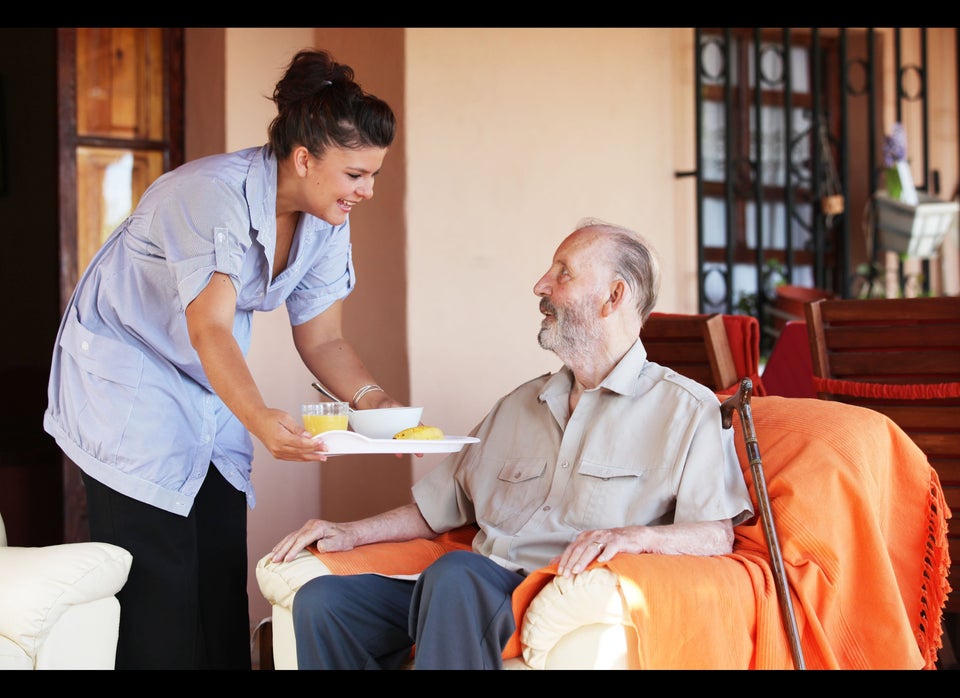Despite continuing advances in pain and symptom management, many Americans still die in pain. Patients in hospitals often report moderate to severe pain before dying, while patients receiving hospice care typically report excellent pain and symptom management. Hospice professionals, widely acknowledged as pain management experts, operate with a philosophy that all pain and uncomfortable symptoms are treatable and everyone is entitled to relief. Nothing is gained by gritting teeth and suffering silently.
Hospice trusts patients as accurate judges of their own discomfort. In assessing its severity, a hospice professional is likely to ask, "On a scale of zero to 10 with 10 as the worst pain you've ever had and zero meaning no pain, how do you rate your discomfort?" Then the hospice team works together to address all the patient's needs by gathering detailed information about pain and other symptoms, a history of the disease, current medications, family dynamics, and emotional and spiritual needs.
"What does quality of life mean to you?" a team member may ask before coming up with a treatment plan to meet a patient's individual needs. One patient may ask for more medication to ease severe pain, while another willingly tolerates more discomfort for the trade-off of being more alert. In extreme cases, a patient or family may request heavy sedation (called palliative or terminal sedation), sometimes to the point of unconsciousness, to escape intractable suffering.
A patient's wife once cornered me to ask, "Doesn't hospice really kill people?" Her naked question is not usually expressed so openly, but it lurks in the minds of many. Of course people die while receiving hospice care; however, they die from their disease process, not from hospice care. Hospice care honors a natural dying process while aggressively managing pain and other uncomfortable symptoms.
"Don't use a sledgehammer to kill a flea," advise hospice experts. Wherever possible, hospice starts treatment with small amounts of nonnarcotic, over-the-counter drugs, like acetaminophen or ibuprofen. If that works, fine. If not, the hospice team will go up the pain relief ladder until they get the desired relief as defined by the patient and caregiver. As a disease progresses, sometimes pain will spike, necessitating an adjustment in medications.
Not every dying person suffers pain. Not one of my four grandparents died in physical discomfort. Linda was not so fortunate. Early in my career, I visited her home with a hospice nurse to assist with the admission process. Linda's breast cancer had spread to her bones, and she was in severe pain.
Linda's husband, Burt, was a retired physician who had practiced medicine for over 40 years. Now his full-time job was taking care of his wife. Worried and frustrated, Burt told me, "My wife is no wimp. We've managed all right until recently, but now she's crying, complaining of unbearable pain, even as I keep increasing her morphine! She's getting enough to kill a horse but with no relief. What's going on?"
The hospice nurse explained, "Relief from bone pain is often relieved with an over-the-counter nonsteroidal, anti-inflammatory drug (NSAID) like ibuprofen." Given ibuprofen, Linda had significant pain relief within 24 hours. Burt admitted that he had believed the morphine alone would kill any pain. "Pain management was never my specialty," he acknowledged humbly.
Family members often question hospice's use of opioids like morphine. "Won't my loved one become an addict?" they ask. When opioids are used appropriately for pain relief, patients do not become addicts. On the contrary, they gain relief from agonizing distress. Unlike those addicted to drugs, a hospice patient whose pain is under control will usually not request more medication. Nevertheless, tolerance for larger doses of opioids can increase as a disease progresses and pain intensifies. In such cases the hospice team, led by the physician, will adjust doses, switch medications, or try different combinations of potent painkillers until comfort is achieved.
Sometimes patients who are taking opioids improve enough that they no longer need such powerful drugs. Then the team will carefully manage weaning the patient to avoid unpleasant side effects.
My mother told me of an elderly lady who once grabbed her hand and pleaded, "Please, please put a pillow over my head. I want to die!" It's not unusual for someone tortured by unrelieved suffering to beg to die. However, with hospice care, not only can pain be effectively managed, but other uncomfortable symptoms like nausea, vomiting, restlessness, agitation, and difficulty breathing can be brought under control. When such ailments are managed well, the will to live typically returns.
Pain is considered the fifth vital sign. Most healthcare workers are required to check for pain, just as they do for temperature, blood pressure, pulse and respiratory rate. A hospice nurse recalled a big, burly retired army officer. When she asked him whether he was in pain, he grimaced and said no. She replied, "I don't want you to be brave; I want you to be comfortable."
One of the biggest fears for all of us is, Will it hurt when I die? Dying does not have to hurt. The choice is yours.
For more information about hospice and effective pain management see the National Hospice and Palliative Care Organization website http://www.caringinfo.org
Earlier on Huff/Post50:
